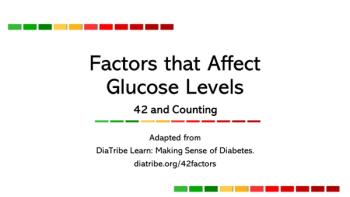
Mild Cirrhosis is Not a Bar to Cardiac Surgery
NEW YORK -- Cardiac surgery can be performed safely in many patients with mild liver cirrhosis, and in select patients with moderate cirrhosis, according to investigators here.
NEW YORK, July 5 -- Cardiac surgery can be performed safely in many patients with mild liver cirrhosis, and in select patients with moderate cirrhosis, according to investigators here.
In a series of 27 patients with cirrhosis of the liver who underwent heart surgery, the operative mortality rate for patients with stage A disease, the mildest form, according to the Child-Turcotte-Pugh classification system was 11%, and the patients had an 80% one-year survival rate, reported Farzan Filsoufi, M.D., and colleagues, of Mount Sinai Hospital.
In contrast, four of six patients (67%) with Child-Turcotte-Pugh class C died during surgery, and only one survived a year, the authors reported in the July issue of Liver Transplantation.
Liver cirrhosis has been shown to be a major risk factor for death among patients undergoing abdominal surgery, with outcomes directly correlating with Child-Turcotte-Pugh disease stage, a measure originally used to estimate perioperative mortality in liver transplant candidates, but now also used to stage cirrhosis.
Although there are few such studies of heart surgery outcomes in patients with cirrhosis, observational reports have suggested that patients with liver disease fare worse during cardiac procedures, the authors noted.
"Patients with cirrhosis who require open heart surgical procedures are among the most challenging and complex patients seen in cardiac surgery," agreed Gonzalo Gonzalez-Stawinski, M.D., of the Cleveland Clinic, in an accompanying editorial.
"Liver disease results in physiologic derangements that are only exacerbated by surgery and cardiopulmonary bypass," Dr. Gonzalez-Stawinski said.
To get a better handle on the challenges of liver co-morbidity in heart surgery patients, the Mount Sinai investigators conducted a retrospective review of 4,952 patients who had cardiac surgery at their hospital from 1998 through 2004.
During that period, 20 men and 27 women with cirrhosis, mean age 58 + 10, underwent cardiac surgery, 18 with the use of cardiopulmonary bypass, and nine without.
The procedures included pericardiectomy, cardiopulmonary bypass grating (five performed off-pump), single or double valve replacement, and aortic repairs.
Ten of the patients had Child-Turcotte-Pugh class A disease, 11 had class B disease, and six had class C. The mean preoperative Model for End-stage Liver Disease (MELD) score was 14.2 + 4.2.
Seven patients (26%) died during surgery. When the deaths were stratified by Child-Turcotte-Pugh class, the authors found that death occurred in only 11% of patients with class A disease, compared with 18% of patients with class B, and 67% of patients with class C cirrhosis.
None of the deaths occurred in the five patients who had revascularization without the use of cardiopulmonary bypass.
One-year survival was 80% among patients with Class A disease, 45% in patients with class B cirrhosis, and 16% in patients with class C disease (P=0.02).
Postoperative complication rates followed a similar pattern, occurring in 22% of patients with class A disease, 56% with class B, and 100% of patients with class C disease.
The authors also found that the Child-Turcotte-Pugh classification was a better predictor of in-hospital death than the MELD score (P=0.02 versus P=0.065, respectively).
There was also a statistically significant inverse relationship between preoperative platelet count and hospital mortality (P<0.04), the authors noted. In addition preoperative platelet count was inversely related to the severity of cirrhosis as determined by the Child-Turcotte-Pugh class. There were no hospital deaths among patients with normal platelets count.
"Operative mortality remains high in Child-Turcotte-Pugh class C patients," the investigators wrote. "Careful patient selection is critical in order to improve surgical outcome in patients with cirrhosis."
In his editorial, Dr. Gonzalez-Stawinski wrote that the study affirms that surgeons need to be cautious in their approach to patients with cirrhosis of the liver.
"Filsoufi et al. report that the expected survival for Child-Pugh class B patients with cirrhosis is 50% at eight months. More importantly, the survival when considering patients with Child-Pugh class C is merely 50% at four months," he wrote. "These data are particularly important to take into account and explain to patients with cirrhosis at the time of consenting for surgery so that an informed decision is made without raising any false hopes or expectations."
Dr. Filsoufi and colleagues acknowledged that their study was limited by its retrospective, observational design, a patient population that was heterogenous and selected by referring specialists as potential heart surgery candidates, and the small sample size, which precludes an accurate assessment of the MELD score (a relative newcomer) as a tool for predicting cardiac surgery outcomes in patients with cirrhosis.
Newsletter
Enhance your clinical practice with the Patient Care newsletter, offering the latest evidence-based guidelines, diagnostic insights, and treatment strategies for primary care physicians.

































































































































































































































































































